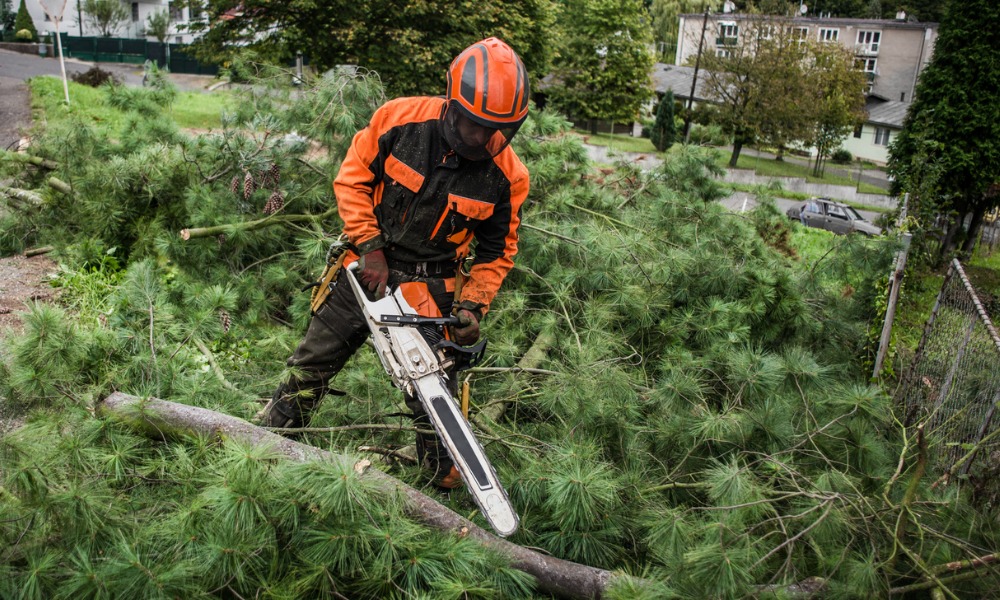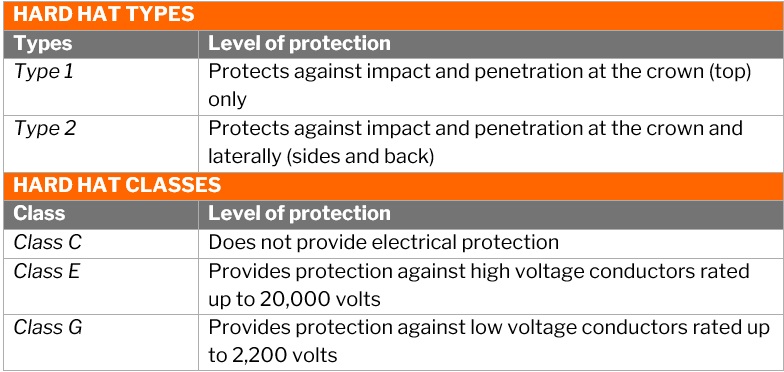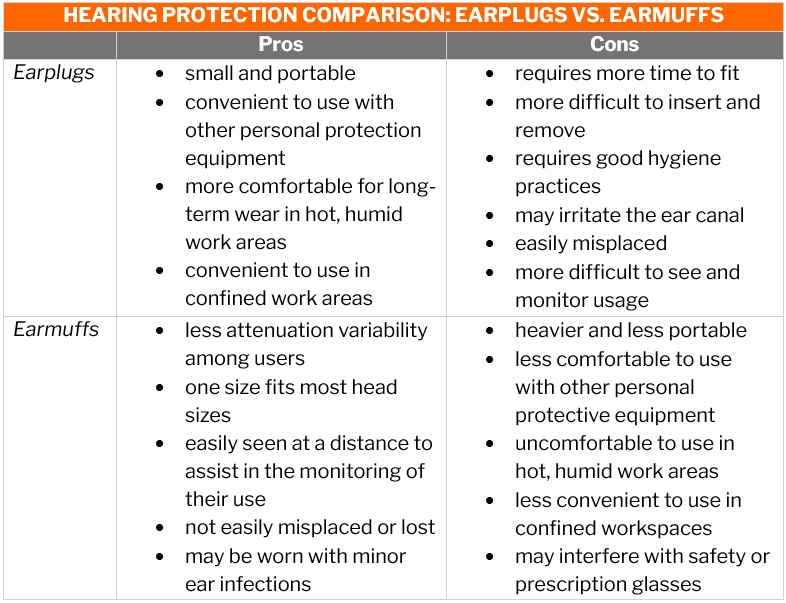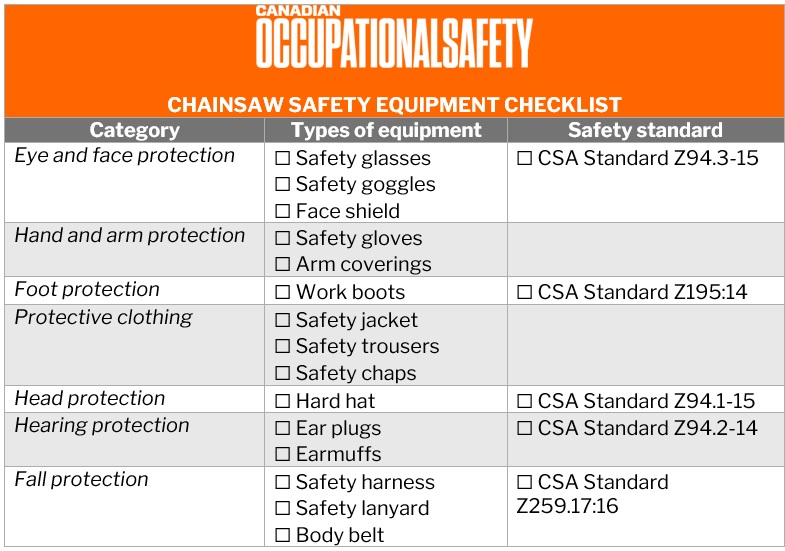Operating a chainsaw comes with huge risks. Find out what types of chainsaw safety equipment your staff needs to keep them protected

Chainsaws are an essential piece of equipment for every logging and construction worksite. But they are also powerful tools that can pose great risks for those who use them. To ensure safety, wearing the right protective gear is as crucial as knowing how to operate the equipment properly.
In this article, Canadian Occupational Safety gives you a rundown of the different chainsaw safety equipment your team needs. We will provide a brief overview of each category and provide a list of the best available products in the market. We also prepared a comprehensive chainsaw safety gear checklist that you can download and save for easy reference.
If chainsaw operation is an essential part of your business, this guide can help you meet your legal obligations and create a safer work environment for your staff. Read on and find out how to pick the right chainsaw safety equipment for your employees.
What types of chainsaw safety equipment does your team need?
Each province and territory has its own minimum personal protective equipment (PPE) requirements for chainsaw use. It’s important for you as an employer to implement safety measures that go beyond the basics.
These are the different types of personal safety gear chainsaw operators need, according to the Canadian Centre for Occupational Health and Safety (CCOHS).
1. Eye and face protection
Chainsaw users are exposed constantly to fast-moving particles such as wood chips. This is why having the right protective gear is a must. The CCOHS requires eye and face protectors that meet the CSA Standard Z94.3-15. These include:
Safety glasses
Chainsaw operators must wear safety glasses with side shields or wraparound sides. This type of eye protection provides better coverage against chips and other fragments that can hurt the eyes. Safety glasses must also have anti-fog lenses for clearer vision in hot and humid work environments.
Here are our picks for the best safety glasses for chainsaw safety:
- 3M Virtua safety glasses with foam gasket
- Dentec CeeTec safety glasses
- Dynamic Volcano Plus rimless safety glasses
- Sellstrom Maxview OTG safety glasses
- Stihl ST2000 safety glasses
Check out our picks for the best safety glasses to recommend to your construction team in this guide.
Safety goggles
Safety goggles offer better protection than safety glasses. This type of eye protection has vents that reduce fogging. For chainsaw operators, direct-vent work goggles are recommended as these protect against large particles such as wood chips. Indirect-vent safety goggles are designed for workers exposed to fine dust and chemical splashes.
These are our choices for the top safety goggles for chainsaw users:
- 3M GoggleGear 500 Series safety goggles
- Dynamic Ultra Tek safety goggles
- Jackson Safety GPL500 safety goggles with flip-up chin guard
- Sellstrom 812 Series safety goggles
- WASIP Softie safety goggles
Learn how to choose the best prescription safety goggles for workers with vision problems.
Face shield
This type of PPE protects the face against fragments from chainsaw work. The CCOHS reminds employers, however, that face shields are considered only as secondary protection and must be worn with the proper eye protection.
2. Safety gloves and arm protection
The right work gloves and arm coverings protect against skin damage caused by cuts and punctures. These types of chainsaw safety gear also provide thermal protection. Read our guide for the best work gloves for winter for your team here.
The CCOHS recommends that chainsaw operators wear work gloves made of leather with ballistic nylon reinforcement on the back. This type of safety gloves offers a good grip and absorbs vibration well.
Here are our picks for the best work gloves for chainsaw operators:
- Arbortec chainsaw work gloves
- Endura Hi-Viz cut-resistant chainsaw gloves
- Intra-Fit chainsaw work gloves
- Vgo chainsaw work gloves
- Stihl Advance Ergo MS work gloves
Find out how you can find the right work gloves for heavy-duty tasks in this guide.
3. Safety footwear
Wearing snug-fitting and comfortable work boots help prevent foot injuries, including those resulting from impact, compression, and puncture. Chainsaw operators must use safety footwear that meets CSA Standard Z195:14 (R2023) and other jurisdictional regulations.
The CCOHS recommends choosing work boots made of cut-resistant materials that can protect the feet if they come in contact with rotating chains. Safety shoes made of ballistic nylon offer the best cut protection.
As regards the soles, rubber works best in wet and snowy work environments. Hobnail boots with grip or cork soles are ideal for rough terrain.
Here are our choices for the best work boots to add to your chainsaw safety equipment list:
- Arbortec Scafell Lite chainsaw work boots
- HAIX Protector Ultra chainsaw work boots
- Husqvarna 544027948 rubber loggers boots
- STC Battler Lumberjack composite-toe chainsaw work boots
- Viking Timberwolf steel-toe chainsaw work boots
Check out our picks for the most comfortable work boots for construction sites in this guide.
4. Protective clothing
Protective clothing such as long-sleeved shirts, trousers, and apron chaps protect the arms, legs, and body from injuries. It also prevents bark and splinters from scuffing your workers’ limbs and body.
The CCOHS recommends close-fitting clothing without cuffs and made of close-woven fabrics as this provides the best coverage. Chainsaw safety clothing with sewn-in ballistic nylon pads offer an additional layer of protection. Trousers that cover your workers up to the belt line provide better protection than those that reach only the upper thigh.
Here are our picks for the best protective clothing for chainsaw workers:
Protective trousers
- Arbortec Breathflex chainsaw trousers
- Husqvarna Classic protective chainsaw pants
- Stihl Function Ergo chainsaw trousers
- WoodlandPRO Arborist chainsaw protection pants
Protective jackets
- Arbortec Breatheflex Pro Legacy chainsaw jacket
- Pfanner chainsaw protection jacket
- Stein EVO-X25 hooded chainsaw work jacket
- Stihl MS Protect high-visibility chainsaw work jacket
Protective chaps
- Husqvarna Technical apron wrap chainsaw chaps
- Notch apron-style chainsaw chaps
- Zelarman 8-layer protective chainsaw chaps
Learn more about the right chainsaw safety equipment that matches your business’ needs in this essential guide to personal safety equipment. This guide includes downloadable checklists of the PPE requirements for each industry.
5. Protective headwear
Chainsaw operators are at risk of head injuries from falling wood and other tree parts. This is why wearing the appropriate protective headgear is a must. This can include hard hats, helmets, and bump caps.
Hard hats are mandatory for all construction projects in Canada. All employees working at the job site must always wear protective headgear. Most jurisdictions also require loggers and forestry workers to use hard hats to protect against head injuries.
Hard hats come in different designs, with each providing different levels of protection.
- Brim hard hats have a single brim on the front to provide some level of eye protection. This type of hard hat suits workers whose jobs involve significant exposure to sunlight.
- Cap-style hard hats come with longer brims that provide additional protection to the face. This type of hard hat has lengthy visors, making it look like a baseball cap.
- Full-brim hard hats have larger brims that surround the entire headwear. These are designed to provide shielding from sunlight and deflect rain away from the head and face.
- Ventilated hard hats feature vents that let airflow in, keeping the head cool while working. These are commonly worn by workers who aren’t exposed to electrical risks.
The CCOHS categorizes hard hats into different classes and types showing the level of protection they provide.

The department requires workers to wear hard hats in high visibility colours. Protective headwear must also meet the CSA Standard Z94.1-15 (R2024) and other jurisdictional regulations.
Here are our choices for the top head protection for chainsaw operators:
- Alacati carbon fiber full-brim hard hat with safety goggles
- Green Devil chainsaw helmet with mesh face shield and earmuffs
- Lift Safety Dax carbon fiber full-brim hard hat
- Pfanner Protos integral arborist helmet
- SafeBuilder chainsaw vented hard hat with mesh face shield and Bluetooth earmuffs
Find out what the best hard hats are to recommend to your construction team in this guide.
6. Hearing protection
This type of chainsaw safety equipment protects workers against hearing loss due to exposure to high levels of noise. The CCOHS lists two general categories of hearing protection:
- Earplugs: designed to be inserted into the ear canal and available in disposable and reusable versions.
- Earmuffs: consist of two sound-attenuating cups often with soft ear cushions that cover the ear, held together by a headband. These are bulkier than earplugs and provide more coverage.
Earmuffs are often seen as offering better hearing protection because of their size and design, but this is not necessarily true. The choice of ear protection depends on a range of factors, including personal preference.
Here’s a summary of the pros and cons of using earplugs and earmuffs as chainsaw safety equipment.

CCOHS requires workers to wear hearing protection that meets the CSA Standard Z94.2-14 (2024), along with other jurisdictional regulations.
Here are our top recommendations for the best hearing protection for chainsaw workers:
- 3M Peltor Optime 105 earmuffs
- Decibullz custom molded ear plugs
- DeWalt DPG17 Bluetooth hearing protector
- Stihl Pro Mark hearing protector earmuff
- Walker's Silencer 2.0 rechargeable electronic ear plugs
Find out how to choose the right hearing protection against loud machinery in this guide.
7. Fall protection equipment
This type of PPE is required for workers who are at risk of falling at least three metres. This includes body belts, harnesses, personal fall arrest systems (PFAS), and personal energy absorbers and lanyards. This category of chainsaw safety equipment must comply with the CSA Standard Z259.17:16 (R2020).
Here are our choices for the top fall protection equipment for chainsaw operators:
- DeWalt fall protection compliance kit
- Monsoon 4D-ring safety harness
- Notch Reecoil full-reach chainsaw lanyard
- TT TRSMIMA fall protection kit
- Vevor full-body safety harness
Learn more about the different regulations regarding fall protection in the workplace in this guide to the best safety harness for the construction site.
What are the risks chainsaw workers face?
There are several industries that require the use of chainsaws. Forestry, logging, and construction are just some of the sectors where chainsaw operators play an important role. Using a chainsaw, however, comes with certain risks. These hazards can be mitigated with proper precaution and the right chainsaw safety equipment.
Here are the most common risks that chainsaw workers face:
Excessive noise
A chainsaw produces extremely loud noise, frequent exposure to which can lead to hearing loss.
Falling objects
Chainsaw operation often involves cutting large trees or wooden poles. This exposes workers to falling objects that can cause serious injuries.
Contact with the rotating chain
Contact with a rotating chain can lead to severe lacerations, open wounds, and amputations.
Flying particles
Without the right chainsaw safety equipment, workers can be exposed to particles that can cause damage to the eye and face. Breathing in sawdust clouds can also lead to respiratory issues.
Toxic exhaust fumes
Most chainsaws run on petrol, which can emit harmful gases. Long-term exposure to these substances can result in various health problems.
Vibration
Chainsaw vibration can cause the user to lose grip. This can lead to various injuries.
How can you find the right chainsaw safety equipment for your team?
There are several factors you need to consider to ensure that you’re choosing the right chainsaw safety gear for your workers. These include:
- how often workers use the chainsaw
- the industry your business is in
- the type of tasks your workers are doing
- the environment chainsaw operators are working in
- the quality and durability of the equipment
- safety standards and regulations in your jurisdiction
Chainsaw safety equipment: downloadable checklist
Here’s a checklist of the different types of chainsaw safety equipment your team may need. These are based on the requirements listed by the CCOHS. You can download the checklist and tick the items that apply to your business.

Visit our Products Resources page to get more news and information about the best chainsaw safety equipment in Canada. Be sure to bookmark this page for the latest industry updates.
Did you find our chainsaw safety equipment checklist helpful? Let us know in the comments.





